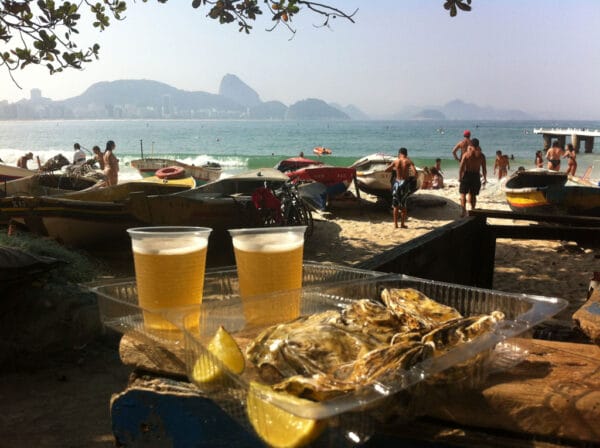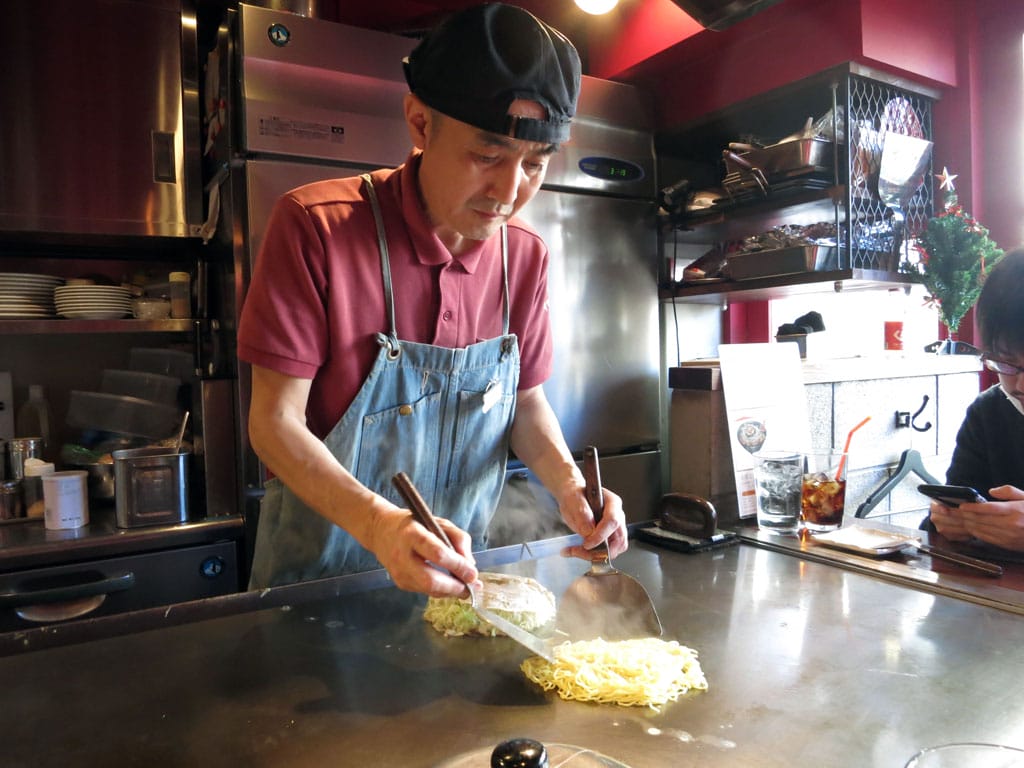Asking cariocas if they remember their first Biscoito Globo, the ubiquitous, crunchy beach snack, is like asking anyone who teethed in the United States if they remember trying Cheerios for the first time.
Globo biscuits and sweet iced mate are to Rio’s beaches what hot dogs and beer are to American baseball stadiums. Calls of “Ó Globo! Ó mate!” are the soundtrack along the shores of Copacabana, Ipanema and Leblon. The iconic packaging, which features a globe-headed mascot surrounded by the Eiffel Tower, the Tower of Pisa, Portugal’s Belém Tower and Rio’s Sugarloaf, has been reproduced on t-shirts, tote bags, and cangas (sarongs).
“It’s very connected to happy memories for cariocas,” said Ana Beatriz Manier, the author of Ó, O Globo! A Historia de Um Biscoito, a book that came out earlier this year. “It’s something parents let their kids eat on the beach.” She said her earliest memory of Biscoito Globo is eating them on the ferry between Rio and nearby Niteroi, where she grew up.
The biscuits have been a mainstay in Rio since 1955, when brothers Milton, Jaime and João Ponce moved their bakery to the city from São Paulo. The family-run business produces as many as 15,000 packages each day, and at the peak of summer, when sales are highest, as many as 500 vendors line up outside Globo’s downtown factory every morning starting at 4 a.m. to replenish their inventory.
The light and airy ring-shaped biscuits are made of manioc flour, water, coconut, eggs, milk, salt and sugar. They come in two flavors, salty and sweet, and are subtly sour. They’re not particularly flavorful, and most cariocas will say that’s OK. They’re best served with the sweet and slightly herbal-tasting iced mate mixed with lemonade that is served out of aluminum barrels.

Biscoitos Globo became the center of an international firestorm during the 2016 Olympics when the New York Times published a searing critique of the snack. Reporter David Segal described biting into a biscuit “as if your teeth are at a party to which your tongue was not invited.”
The article struck a nerve in Brazil, sparking angry backlash on social media. “There are two types of people, those who like Biscoito Globo and those of dubious character,” one Brazilian tweeted. Another wrote: “A foreigner insulting Biscoito Globo is like a visitor insulting your grandmother’s cake.”
“Someone not from Brazil spoke critically about [the snacks], and that upset people,” Manier said. “He wrote just about the flavor – as if there weren’t a wider context.” Manier said Globo’s lightness, connection to the beach and popularity that spans socioeconomic strata make it quintessentially Carioca.
The New York Times review wasn’t Rio’s first Globo-and-mate scandal. In 2010 mate vendors were briefly banned from selling their iced tea out of barrels amid sanitation concerns. Vendors and beachgoers alike protested, and the mayor soon lifted the ban; in 2012 the city government conferred the status of “cultural patrimony” on the vendors, meaning licensed mate vendors would be here to stay.
On a recent sunny fall Sunday morning we dutifully made our way to Arpoador, at the end of Ipanema Beach. In the distance, carioca kids of all shades were boogie boarding and learning to surf. Vendors hawked sunglasses, bikinis, caipirinhas, empanadas, shrimp – and, of course, Globo and mate.
We hailed Márcio Silva, a 15-year veteran of the Globo-and-mate trade. He told us he loves his job because it allows him to be his own boss and to interact with people on the beach all day. He said he likes Biscoito Globo too, but that it was harder to describe why. He paused. It wasn’t because of the taste, he said. “If you came to the beach and didn’t eat Biscoito Globo or drink mate – you didn’t come to the beach.”
 August 1, 2016 Olympian Appetites
August 1, 2016 Olympian Appetites
Athletes, spectators and everyone else gathered in Rio for the Summer Olympics will have […] Posted in Rio August 25, 2023 Jyaken Nou
August 25, 2023 Jyaken Nou
What is it that’s so dizzyingly addictive about okonomiyaki? It might be the interactive […] Posted in Tokyo February 16, 2022 Huaraches Rossy
February 16, 2022 Huaraches Rossy
Visiting the Jamaica plant and flower market is one of our favorite activities in Mexico […] Posted in Mexico City
Danielle RenwickDanielle Renwick
Published on May 15, 2017
Related stories
August 1, 2016
RioAthletes, spectators and everyone else gathered in Rio for the Summer Olympics will have no shortage of good eating options – and not just in the usual touristed areas. We’ve rounded up some of our favorite spots around town. CADEG The 100,000-square-meter market is divided into three warehouse-style floors, with a pavilion just for flower…
August 25, 2023
TokyoWhat is it that’s so dizzyingly addictive about okonomiyaki? It might be the interactive DIY nature of building your own meal and serving it up from a Japanese teppan grill. Perhaps it’s the communal feeling of sitting around with a beer or two and cooking together. However, most likely is the fact that it’s so…
February 16, 2022
Mexico CityVisiting the Jamaica plant and flower market is one of our favorite activities in Mexico City; we love getting lost in its green alleys and never fail to emerge with at least one new plant and a beautiful bouquet of flowers. And of course, we’re always on the lookout for new places to eat. Our…

















































































